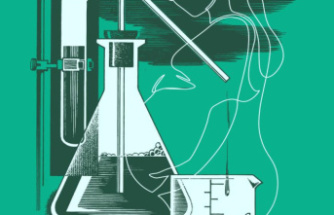The HOPE Program, designed to divert drug users from jail to treatment and reduce opioid overdose deaths on Staten Island, only started up in mid-January, but it already has gotten more than 70 people to "meaningfully engage" with resources to help them move away from risky drug use. As a result, they've been able to avoid going to trial, according to the Richmond County district attorney's office.
The mayor's office and other stakeholders are watching closely to determine whether the collaboration between health care providers and law enforcement officers can provide a model for other boroughs.
Drug treatment courts have existed in New York for years, but the HOPE Program aims to allow people whose top charge is misdemeanor drug possession to skirt court altogether. It also embraces a progressive approach to drug use that aims to reduce its harms rather than simply promote abstinence.
article continues below advertisementDistrict Attorney Michael McMahon, who spearheaded the program, enlisted the help of the Staten Island Performing Provider System, a network of health care providers on the island, to facilitate it. The network pays peer counselors to greet eligible arrestees at the precinct to explain the program and give them the opportunity to go straight to a designated center for assessment.
The Staten Island PPS also pays for Community Health Action of Staten Island to stay open 24-7 for that purpose, while the state Office of Alcoholism and Substance Abuse Services provides funding for extra hours at another center on the island.
"We suggested the peer component," said Joseph Conte, executive director of the Staten Island PPS. "You need not only a disinterested party but someone who's walked a mile in the person's shoes."
Initial numbers show promise: As of April 11, 137 people had been offered access to the HOPE program, and about 89% of those who had reached the seven-day deadline for accepting admission decided to participate. So far, about 94% of those who completed the program adhered closely enough to a treatment plan to avoid going to trial upon evaluation.
Seven people offered access to the program had been rearrested as of April 3.
Whether the program will lead to fewer overdose deaths on Staten Island remains to be seen. That goal is more important than getting every participant to completely abstain from drug use, said Diane Arneth, executive director of Staten Island operations at Bright Point Health, which runs Community Health Action of Staten Island.
"Our job is to keep people as healthy as we can," said Arneth. "We know some people are not ready to stop using drugs and some people are not going to stop. How do we help them so there's less harm to themselves, their families and the community?"
To its credit, law enforcement has agreed to a broad interpretation of the word "treatment," Arneth said. In the context of the HOPE Program, a treatment plan could involve drug detox, or it could involve visiting a counselor every week, participating in a harm-reduction program designed to minimize the risks of using drugs, or signing up for health insurance, depending on the person's needs and level of commitment.
That doesn't mean the DA will let people slide if they don't make progress on the goals set out in their treatment plans, however. "If we're not going to prosecute a case, we need to know someone is meeting their expectations," said McMahon.
The district attorney said he initially faced some resistance from health care providers to working with law enforcement, particularly when it came to handing over data on program participants.
"One obstacle is some people in health care think it's only a public health crisis and don't realize law enforcement is a party to this," McMahon said.
Ultimately, investments in the HOPE Program will benefit more than just those who go through the criminal justice system, according to Conte. Since the program started, participants have brought friends and family members struggling with substance use problems into the recovery centers, and their extended hours have benefited those who are referred through other channels, he said.
The district attorney is working on finding a permanent funding source for the program.
The HOPE Program, designed to divert drug users from jail to treatment and reduce opioid overdose deaths on Staten Island, only started up in mid-January, but it already has gotten more than 70 people to "meaningfully engage" with resources to help them move away from risky drug use. As a result, they've been able to avoid going to trial, according to the Richmond County district attorney's office.
The mayor's office and other stakeholders are watching closely to determine whether the collaboration between health care providers and law enforcement officers can provide a model for other boroughs.
Drug treatment courts have existed in New York for years, but the HOPE Program aims to allow people whose top charge is misdemeanor drug possession to skirt court altogether. It also embraces a progressive approach to drug use that aims to reduce its harms rather than simply promote abstinence.
District Attorney Michael McMahon, who spearheaded the program, enlisted the help of the Staten Island Performing Provider System, a network of health care providers on the island, to facilitate it. The network pays peer counselors to greet eligible arrestees at the precinct to explain the program and give them the opportunity to go straight to a designated center for assessment.
The Staten Island PPS also pays for Community Health Action of Staten Island to stay open 24-7 for that purpose, while the state Office of Alcoholism and Substance Abuse Services provides funding for extra hours at another center on the island.
"We suggested the peer component," said Joseph Conte, executive director of the Staten Island PPS. "You need not only a disinterested party but someone who's walked a mile in the person's shoes."
Initial numbers show promise: As of April 11, 137 people had been offered access to the HOPE program, and about 89% of those who had reached the seven-day deadline for accepting admission decided to participate. So far, about 94% of those who completed the program adhered closely enough to a treatment plan to avoid going to trial upon evaluation.
Seven people offered access to the program had been rearrested as of April 3.
Whether the program will lead to fewer overdose deaths on Staten Island remains to be seen. That goal is more important than getting every participant to completely abstain from drug use, said Diane Arneth, executive director of Staten Island operations at Bright Point Health, which runs Community Health Action of Staten Island.
"Our job is to keep people as healthy as we can," said Arneth. "We know some people are not ready to stop using drugs and some people are not going to stop. How do we help them so there's less harm to themselves, their families and the community?"
To its credit, law enforcement has agreed to a broad interpretation of the word "treatment," Arneth said. In the context of the HOPE Program, a treatment plan could involve drug detox, or it could involve visiting a counselor every week, participating in a harm-reduction program designed to minimize the risks of using drugs, or signing up for health insurance, depending on the person's needs and level of commitment.
That doesn't mean the DA will let people slide if they don't make progress on the goals set out in their treatment plans, however. "If we're not going to prosecute a case, we need to know someone is meeting their expectations," said McMahon.
The district attorney said he initially faced some resistance from health care providers to working with law enforcement, particularly when it came to handing over data on program participants.
"One obstacle is some people in health care think it's only a public health crisis and don't realize law enforcement is a party to this," McMahon said.
Ultimately, investments in the HOPE Program will benefit more than just those who go through the criminal justice system, according to Conte. Since the program started, participants have brought friends and family members struggling with substance use problems into the recovery centers, and their extended hours have benefited those who are referred through other channels, he said.
The district attorney is working on finding a permanent funding source for the program.
Brought to you by Crain's New York Business, Health Pulse is a subscription-only website focused on the business of health care. The site is updated every day with breaking news, research and unique information. Subscribe today and receive access to the site and the daily emails. Plus, twice a week we release a special report called Extra, featuring data and statistics.
Our editors found this article on this site using Google and regenerated it for our readers.











